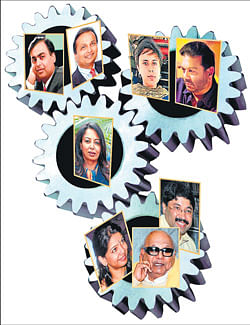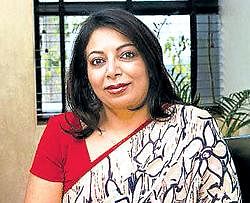
What has become public so far – despite the fact that major media houses have blacked out these tapes – seems to be only a tip of the iceberg. The CBI, which is investigating the 2G spectrum allocation case, got the directorate general of investigations of income tax to tap some phone conversations and the latter stumbled on talks between Radia and journalists, politicians and ex-bureaucrats. The result: the CBI has in its possession more than 800 documents/files running into more than 80,000 pages. The CBI affidavit to the Supreme Court has said about the Radia tapes: “The exercise is a prolonged and painstaking one and is still continuing as 5,851 call recordings, many of them 30-40 minutes long, have to be listened to and analysed. About 3,500 calls have been analysed and the process is going on.” Only 104 conversations are said to be in the public domain.
So, what might still remain away from the media glare is anybody’s guess!
Radia is a lobbyist for industrialists Mukesh Ambani and Ratan Tata and her conversations with media editors and reporters, industrialists and politicians range from allocation of ministerial portfolios (soon after the Lok Sabha elections in 2009) to the dispute between the Ambani brothers over gas allocation and cases in the Supreme Court, not to speak of positioning of certain reports she has supplied to media houses and their headlines, raising serious questions about violation of the Lakshman Rekha governing news gathering, lobbying and influence peddling. These conversations expose the unethical practice of `planting’ of stories by lobbyists whose vested interests are obvious, and journalists ready to throw to the winds the cardinal principles of journalism. Journalists involved – Barkha Dutt, group editor, English news, NDTV news channel, Vir Sanghvi, editorial adviser, Hindustan Times, Prabhu Chawla, editor, language editions, India Today magazine, among others – while not denying the conversations, dismissed wrong doing saying it was part of information gathering from their sources. There was, of course, no talk of quid pro quo in the tapes. Says a senior journalist about the tapes: “All of us know seeking information from a source is different from securing cabinet berths and showing your eagerness to the source to fulfill their wishes.” Said another: “If the Mumbai Adarsh housing scam has blackened the image of the Army, these tapes have exposed a section of senior journalists and that media is not a holy cow either.”
‘AlR’ with a difference
Some of these journalists, in their talk with Radia – derisively referred to as `All India Radia’ by the Twitteratti – appear to agree to her suggestion to talk to the Congress leaders while passing on her message relating to the ministerial berths for the DMK, a key constituent of the UPA. With business journalists, she speaks on the gas pricing dispute between the Ambani brothers, mostly about favourable coverage for Mukesh Ambani. In one conversation, Dutt asks Radia what she should tell her Congress contacts while Sanghvi asks what kind of story she wants him to do on the gas dispute between the two Ambani brothers.
What is shocking is that Radia is powerful enough to even dictate the content and coverage of newspapers.
Prashant Bhushan, advocate for Centre for Public Interest Litigation, who has filed the case on the telecom scam and who hass submitted these transcripts to the court as evidence, says: “It is unfortunate that some media houses which are owned or have links with corporate houses have become power brokers and fixers for their ambitions.”
Related stories
Where does the buck stop?
The woman who wields clout
The reveal-all tapes
Niira Radia and media: Barkha Dutt
Niira Radia and media: Vir Sanghvi
Niira Radia and media: M K Venu

